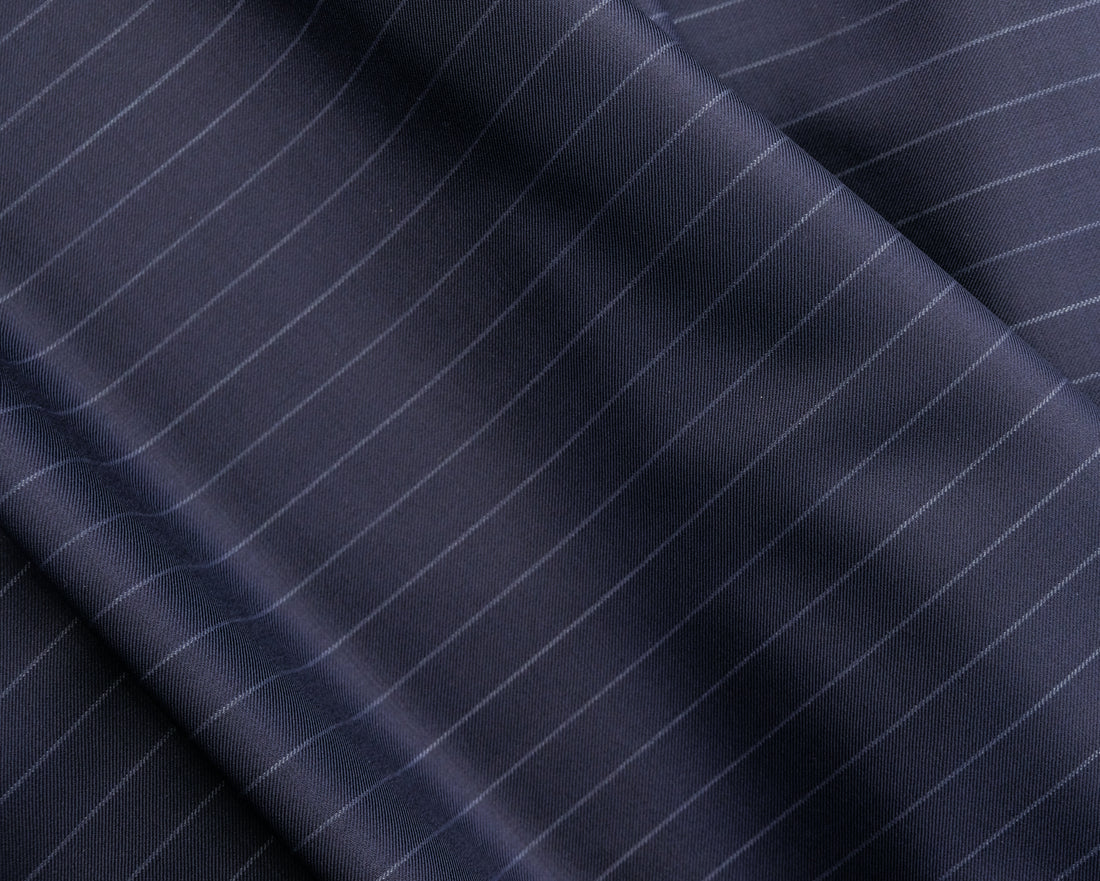There are two main factors that decide on a suit’s quality and cost: construction and fabric. This is the suiting equivalent to parts and labor on a car.
Suits are made with either fused, half, or full canvas interlinings onto which fabric is either glued (fused) or sewn. Glued suits are cheaper, sewn suits are more expensive.
Fabric is the other main factor that decides a suit’s quality and cost. Good fabric will feel better, hold its shape for longer, and look better for its lifespan.
Suit Fabric Types
Wool
Wool is without a doubt the most common fabric used for men’s suit’s.
With that said, here are the benefits of wool in a quick list:
- It breathes easily
- It resists wrinkling
- It’s flame-resistant, which is convenient for well-dressed firefighters or those of us who work as stunt doubles
- It’s naturally water-resistant
- It feels good
- It keeps you warm in winter and lets you ventilate in the summer
- It tailors well
Linen

Linen is a hugely popular summertime fabric. It also happens to be vegan as it comes from a flax plant, not an animal. In fact, linen is technically a vegetable.
One of the oldest fabrics in existence (the ancient Egyptians were known to wear linen), it’s still one of the most widely used, especially in continental Europe. It’s expensive but its cost can be justified from these benefits:
- Breathability: Linen breathes very easily. This makes it a great summer fabric.
- Casual élan: Linen wrinkles naturally and easily. It’s futile to fight it, you can only embrace it or choose to not wear linen. The wrinkling is part of the fabric’s charm and makes it great for casual outings.
Cotton
Though it’s the fabric of our lives, cotton suiting is a little tougher to find than wool suits. Generally less expensive than wool and linen, high-end cotton suits can be pulled off in office environments and also for more celebratory events such as weddings. Note: cotton trousers don’t drape like linen or wool, so make sure that they have a crease sharp enough to cut butter.
Here are some of the selling points of cotton:
- Cost: Cotton suiting tends to be cheaper than wools and linens of similar quality. If you’re looking for a summer suit but are on a budget, think about cotton.
- Care: While we don’t recommend it, you can machine wash a cotton suit in a pinch. Cotton is generally easier to care for than wool and doesn’t need to be brushed like wool to maintain its lifespan. Further, you can iron it pretty easily.
- Lightweight: Cotton makes for a physically light suit that’s easier to wear when it’s hot. Beware, however: cotton absorbs moisture, so if you’re a sweaty guy, think twice.
Silk
It’s pretty rare to see a 100% silk suit nowadays. That sort of thing is generally limited to the like of Prince Charles while vacationing in the tropics. It’s more likely that you’ll see silk as part of a suit’s fabrication (60% worsted wool and 40% silk, for example). It is sometimes used in high-end suit linings, but this should only be done if the customer really loves a lining’s design, as synthetic silks like viscose are actually stronger than the original article.
Silk has many benefits, such as:
- Hand: Silk feels beautiful on the hand and against the skin. It’s light, airy, and incredibly smooth.
- Luxurious comfort: Such a feel makes silk a luxury item, and its breathability is right on par with wool.
Mohair
Mohair is made from the hair of the angora goat. It’s similar to wool but has a bit of a shine to it. It’s also known for a “bite” to its hand, which is a bit of a scratchiness. It performs well and resist wrinkling like no other fabric.
Vicuña

Vicuña refers to both a piece of fabric and the animal from which that fabric is harvested. It’s like cashmere on steroids. A llama relative, the vicuña lives in the Andes and is raised specifically for its coat. They produce extremely small amounts of superfine wool that is the softest and warmest in its class.

